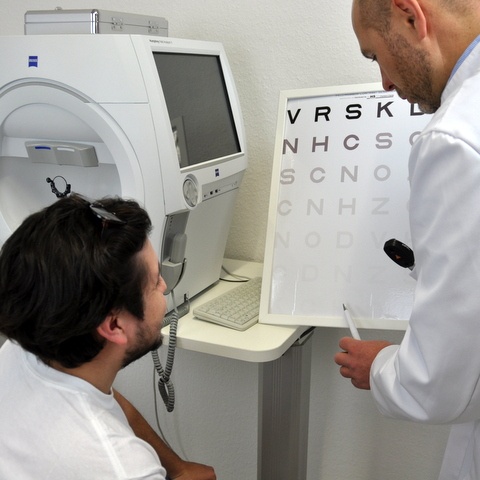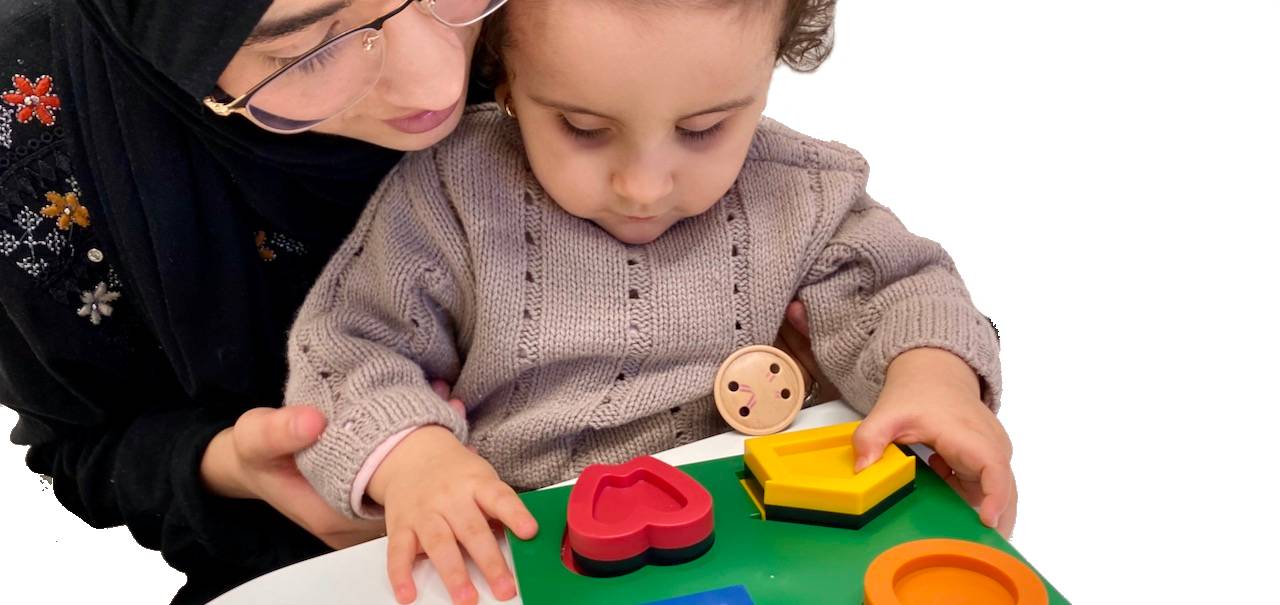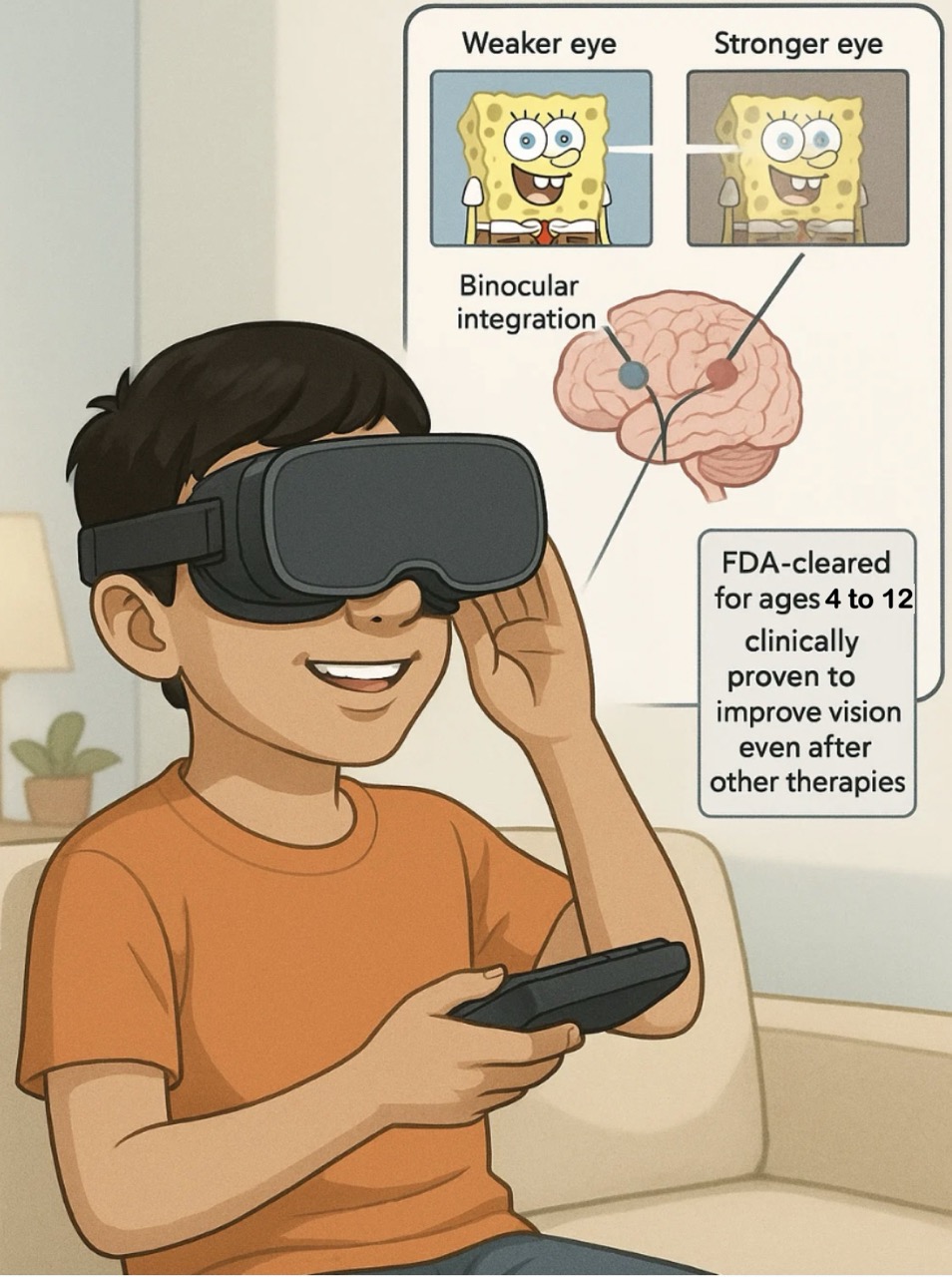Nearly half of children worldwide now struggle with nearsightedness, making pediatric myopia treatment more significant than ever. Screen time and reduced outdoor activities have led to an unprecedented surge in childhood myopia cases.

Parents often ask whether their children can overcome myopia naturally or if childhood treatments can cure it. Traditional methods like eye exercises haven't delivered substantial results. However, a new treatment called SYD-101 shows remarkable promise. This breakthrough could revolutionize non-surgical myopia treatment for young patients.
This piece explores the latest developments in pediatric myopia management and examines SYD-101's potential effects in 2025. You'll learn about current treatment options and their implications for your child's vision health.
Understanding Pediatric Myopia: Causes and Concerns
Children don't outgrow myopia (nearsightedness). The condition starts during childhood and usually gets worse throughout childhood and teenage years without the right treatment.
Let me explain myopia with a simple comparison. Your child's eye works like a balloon that slowly inflates. The eyeball (our balloon) grows too long in myopia cases. Light focuses in front of the retina instead of directly on it. This makes distant objects appear blurry.
The numbers paint a concerning picture. Myopia affects about 27 million children in the United States, and this number keeps growing each year. Kids spend less time outdoors and more time looking at digital devices up close. These two factors drive this increase.
Beyond Just Glasses
Parents often think myopia just means wearing glasses or contact lenses. The reality goes way beyond the reach and influence of simple vision correction. High myopia can lead to serious eye problems later in life:
- Cataracts (showing up earlier in life)
- Glaucoma (increased pressure within the eye)
- Retinal detachment (a sight-threatening emergency)
People with moderate myopia face higher risks of these conditions compared to those without myopia.
The Critical Window for Intervention
Early action makes a huge difference in pediatric myopia cases. Each year that myopia progresses without treatment adds to your child's lifetime risk of eye disease.
Traditional methods like eye exercises don't cure myopia. In spite of that, we have many proven strategies that can slow its progression if we start early enough.
Eye care professionals now see myopia as more than just a vision problem. It needs active management. Regular complete eye exams help us catch myopia early. We can start the right treatment before it gets substantially worse.
SYD-101: A Breakthrough in Myopia Treatment
The FDA has accepted a New Drug Application for SYD-101, which could change how we treat pediatric myopia. Parents often ask what makes this treatment special compared to other options.
SYD-101, developed by Sydnexis, could become the first FDA-approved eye drops to slow down myopia in children. These drops work better than current compounded atropine solutions because they have superior stability at a neutral pH. This makes them more effective and comfortable when used daily.
Let me explain how SYD-101 works. Think of your child's eye like a balloon that slowly inflates. When someone has myopia, this balloon (the eyeball) grows too long. SYD-101 works like a gentle hand that controls this growth by:
- Sending signals to the retina to slow down eye growth
- Making the sclera (white part of the eye) stronger and more resistant to stretching
- Creating a cushion against too much eye elongation by affecting the choroid layer
SYD-101 stands out because it's made with kids in mind. These low-concentration atropine drops help without causing the usual side effects like blurry vision or light sensitivity. The drops feel comfortable and can last up to three years on the shelf, which makes them great for long-term use.
The STAR study behind SYD-101 shows promising results:
- Over 850 children aged 3-14 participated
- The study ran for three years and provided detailed safety and efficacy data
The FDA plans to decide on SYD-101's approval by October 23, 2025. Until then, your child should keep getting regular eye exams. Talk to your eye doctor about the best ways to manage myopia right now.
This new treatment works best when combined with other methods. You can pair it with special glasses or contact lenses, and encourage your child to spend more time outdoors while limiting screen time.
Comprehensive Myopia Management Beyond Medication
SYD-101 medication shows promising results, but myopia management needs an integrated approach. Parents naturally want to explore every option for their child's vision health.
Natural light exposure helps manage myopia effectively. Studies show children who play outside develop myopia at a lower rate. Nature provides its own treatment for myopia. Your child needs at least 90 minutes of outdoor activity daily to get the best results.
Screen time affects vision health just as much. Children should practice the 20-20-20 rule during extended screen use. Looking at something 20 feet away every 20 minutes for 20 seconds reduces eye strain and helps slow myopia progression.
Specialized eyewear works well among pharmaceutical treatments:
- Multifocal glasses and contacts: These create multiple focus points that can help control how light enters the eye, potentially slowing eyeball elongation
- Orthokeratology (Ortho-K): Specially designed contact lenses worn overnight that temporarily reshape the cornea, providing clear vision throughout the day without daytime eyewear
Regular complete eye exams are the life-blood of any myopia management plan. These check-ups help monitor prescription changes and let your eye care professional assess how well the treatment strategy works.
Modern pediatric myopia treatment shines through its customization. Each child needs a unique solution, then your eye doctor might recommend combining therapies based on your child's needs and lifestyle.
The FDA's decision on SYD-101 is pending, but starting these complementary approaches can improve your child's vision health trip significantly. Note that early intervention with multiple treatments gives the best chance to slow myopia progression and reduce long-term eye health risks.
Discover a Comprehensive Approach to Vision Restoration at Fedorov Restore Vision Clinic

At Fedorov Restore Vision Clinic, we combine cutting-edge technology with personalized care to offer a full spectrum of services designed to preserve and enhance your vision. Our approach extends beyond conventional myopia management; we integrate advanced refractive solutions with precise OCT examinations to monitor retinal health and track disease progression. This robust diagnostic capability allows us to detect subtle changes in your retinal structure, ensuring that potential issues are identified and managed early.
We understand that vision is as much a personal experience as it is a clinical measurement. That is why our comprehensive assessments also include detailed evaluations of subjective vision. By merging objective imaging data with a thorough analysis of your visual experience, we create individualized treatment plans that address both the physical and functional aspects of your sight.
Our commitment is to deliver long-term visual health, whether you are dealing with myopia, other refractive challenges, or complex retinal conditions. At Fedorov Restore Vision Clinic, we are dedicated to guiding you on every step of your vision restoration journey, utilizing the latest research-backed methods and technology to help you achieve the best possible outcomes.
Would you like to explore more about our services or discuss how our tailored treatment plans can meet your specific needs?
Conclusion
Pediatric myopia management has evolved substantially, giving parents more hope than ever before. The FDA's decision on SYD-101 comes in October 2025, but protecting your child's vision health needs immediate action.
Research shows that combining different treatment approaches works best. Simple steps like more outdoor time and less screen exposure can make a meaningful difference. Specialized eyewear options combined with regular detailed eye exams help track and control myopia progression well.
Each child's myopia experience is different, but early intervention produces better outcomes. Your child needs more than just hoping they might outgrow myopia naturally. Working with an eye care professional to develop a customized treatment strategy creates the best path forward.
Your child has the greatest chance for healthy vision throughout their life when you stay informed about emerging treatments like SYD-101 and continue current management practices. We can protect the next generation from long-term risks of progressive myopia together.
FAQs
Q1. What is SYD-101 and how does it differ from traditional myopia treatments? SYD-101 is a specially formulated low-dose atropine eye drop designed to slow myopia progression in children. It offers superior stability at a neutral pH, making it more effective and comfortable for daily use compared to traditional atropine solutions.
Q2. When will SYD-101 be available for use in pediatric myopia treatment? The FDA has set a target date of October 23, 2025, to decide on SYD-101's approval. Until then, parents should maintain regular eye exams for their children and discuss current myopia management strategies with their eye care professional.
Q3. Can children outgrow myopia without intervention? Contrary to what many parents hope, children typically don't outgrow myopia naturally. Without proper intervention, myopia usually worsens throughout childhood and adolescence, making early treatment crucial.
Q4. What are some non-medical approaches to managing pediatric myopia? Non-medical approaches include increasing outdoor time (at least 90 minutes daily), managing screen time using the 20-20-20 rule, and using specialized eyewear like multifocal glasses or orthokeratology lenses. These methods can complement medical treatments effectively.
Q5. Why is early intervention important in pediatric myopia management? Early intervention is crucial because each year a child's myopia progresses unchecked adds to their lifetime risk of serious eye conditions. Starting treatment early can slow progression and reduce the risk of complications like cataracts, glaucoma, and retinal detachment later in life.
Q6. How do OCT exams contribute to myopia management at Fedorov Restore Vision Clinic?
Optical Coherence Tomography (OCT) exams are a vital component of our comprehensive eye assessments. OCT imaging provides high-resolution cross-sectional views of the retina, allowing us to track subtle changes in retinal structure and myopia progression. This technology aids in early detection of potential complications, enabling tailored treatment plans that support both immediate and long-term vision health.
References:
Q7. What advanced refractive services are available at Fedorov Restore Vision Clinic?
Our clinic offers state-of-the-art refractive services designed to provide personalized and precise vision correction. These services include customized lens fittings, refractive error analysis, and comprehensive evaluations using advanced diagnostic tools. By integrating these services with cutting-edge imaging techniques, we ensure that each patient receives the most accurate and effective treatment plan tailored to their unique visual needs.
References:
Q8. How do you integrate subjective vision assessments with objective diagnostic methods?
At Fedorov Restore Vision Clinic, we believe that understanding your visual experience is as important as the clinical measurements. Our approach combines objective diagnostic tools—such as OCT and refractive error analysis—with comprehensive subjective vision assessments. This dual strategy allows us to capture both the measurable aspects of your eye health and the functional impact of vision on your daily life, leading to a highly personalized treatment plan that addresses all dimensions of your visual well-being.
Disclaimer: The information provided in this blog is for general informational purposes only and should not be construed as medical advice. It is not intended to replace consultation with a qualified healthcare professional. Although every effort has been made to ensure the accuracy of the content, Fedorov Restore Vision Clinic and its associated partners make no representations or warranties regarding the completeness, reliability, or accuracy of the information discussed, including emerging treatments such as SYD-101 and associated diagnostic services. The descriptions of services, technologies, and potential treatment outcomes are intended to be illustrative and may not reflect individual results. Readers are encouraged to consult with an eye care professional to determine the most appropriate treatment options for their specific circumstances. Additionally, any mention of treatments under review or pending regulatory approval should be considered preliminary and subject to further clinical evaluation and regulatory decisions.





Comments
Currently, there are no comments. Be the first to post one!